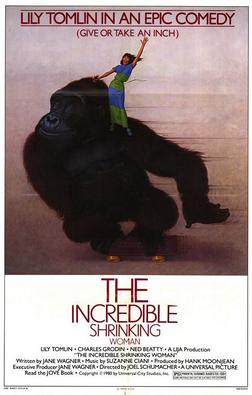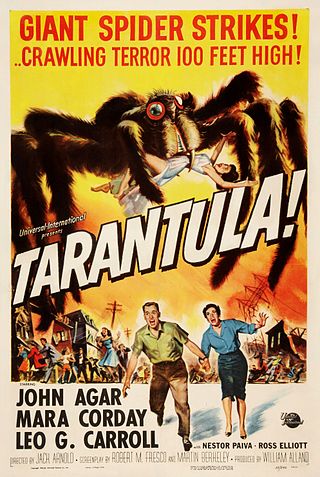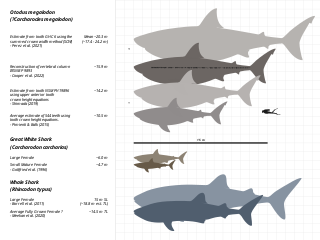Related Research Articles

In computing, a hash table, also known as a hash map or a hash set, is a data structure that implements an associative array, also called a dictionary, which is an abstract data type that maps keys to values. A hash table uses a hash function to compute an index, also called a hash code, into an array of buckets or slots, from which the desired value can be found. During lookup, the key is hashed and the resulting hash indicates where the corresponding value is stored.

The Incredible Shrinking Man is a 1957 American science fiction film directed by Jack Arnold, based on Richard Matheson's 1956 novel, The Shrinking Man. The film stars Grant Williams as Scott and Randy Stuart as Scott's wife, Louise. While relaxing on a boat, Scott is enveloped by a strange fog. Months later, he discovers that he appears to be shrinking. By the time Scott has reached the height of a small boy, his condition becomes known to the public. When he learns there is no cure for his condition, he lashes out at his wife. As Scott shrinks to the point where he can fit into a dollhouse, he has a battle with his family cat, leaving him lost and alone in his basement, where he is now smaller than the average insect.

Edible mushrooms are the fleshy fruit bodies of several species of macrofungi. Edibility may be defined by criteria including the absence of poisonous effects on humans and desirable taste and aroma. Mushrooms that have a particularly desirable taste are described as "choice". Edible mushrooms are consumed for their nutritional and culinary value. Mushrooms, especially dried shiitake, are sources of umami flavor.

Bionics or biologically inspired engineering is the application of biological methods and systems found in nature to the study and design engineering systems and modern technology.

Fantastic Voyage is a 1966 American science fiction adventure film directed by Richard Fleischer and written by Harry Kleiner, based on a story by Otto Klement and Jerome Bixby. The film is about a submarine crew who is shrunk to microscopic size and venture into the body of an injured scientist to repair damage to his brain. In adapting the story for his script, Kleiner abandoned all but the concept of miniaturization and added a Cold War element. The film starred Stephen Boyd, Raquel Welch, Edmond O'Brien, Donald Pleasence, and Arthur Kennedy.

Miniaturization is the trend to manufacture ever-smaller mechanical, optical, and electronic products and devices. Examples include miniaturization of mobile phones, computers and vehicle engine downsizing. In electronics, the exponential scaling and miniaturization of silicon MOSFETs leads to the number of transistors on an integrated circuit chip doubling every two years, an observation known as Moore's law. This leads to MOS integrated circuits such as microprocessors and memory chips being built with increasing transistor density, faster performance, and lower power consumption, enabling the miniaturization of electronic devices.

In computer science, a dynamic array, growable array, resizable array, dynamic table, mutable array, or array list is a random access, variable-size list data structure that allows elements to be added or removed. It is supplied with standard libraries in many modern mainstream programming languages. Dynamic arrays overcome a limit of static arrays, which have a fixed capacity that needs to be specified at allocation.

The Incredible Shrinking Woman is a 1981 American science-fiction comedy film directed by Joel Schumacher, written by Jane Wagner, and starring Lily Tomlin, Charles Grodin, Ned Beatty, John Glover, and Elizabeth Wilson. A parody of the 1957 science-fiction film The Incredible Shrinking Man, it is credited as based on Richard Matheson's 1956 novel, The Shrinking Man. The original music score was composed by Suzanne Ciani.
"The Terratin Incident" is the twelfth episode of the first season of the American animated science fiction television series Star Trek. It first aired in the NBC Saturday morning lineup on November 24, 1973, and was written by American screenwriter Paul Schneider who had previously written the Original Series episodes "Balance of Terror" and "The Squire of Gothos". It came from a one-paragraph story idea by Gene Roddenberry based on Gulliver's Travels.

Tarantula is a 1955 American science-fiction monster film produced by William Alland and directed by Jack Arnold. It stars John Agar, Mara Corday, and Leo G. Carroll. The film is about a scientist developing a miracle nutrient to feed a rapidly growing human population. In its unperfected state, the nutrient causes extraordinarily rapid growth, creating a deadly problem when a tarantula test subject escapes and continues to grow larger and larger. The screenplay by Robert M. Fresco and Martin Berkeley was based on a story by Arnold, which was in turn inspired by Fresco's teleplay for the 1955 Science Fiction Theatre episode "No Food for Thought", also directed by Arnold. The film was distributed by Universal Pictures as a Universal-International release, and reissued in 1962 through Sherman S. Krellberg's Ultra Pictures.
In science fiction, a shrink ray is any device which uses energy to reduce the physical size of matter. Many are also capable of enlarging items as well. A growth ray typically only has the ability to enlarge.

The Atom is a superhero appearing in American comic books published by DC Comics. The character was created by editor and co-plotter Julius Schwartz, writer Gardner Fox and penciler Gil Kane. The Atom was one of the first superheroes of the Silver Age of Comic Books and debuted in Showcase #34.

A fungus is any member of the group of eukaryotic organisms that includes microorganisms such as yeasts and molds, as well as the more familiar mushrooms. These organisms are classified as one of the traditional eukaryotic kingdoms, along with Animalia, Plantae and either Protista or Protozoa and Chromista.

Tardigrades, known colloquially as water bears or moss piglets, are a phylum of eight-legged segmented micro-animals. They were first described by the German zoologist Johann August Ephraim Goeze in 1773, who called them Kleiner Wasserbär. In 1777, the Italian biologist Lazzaro Spallanzani named them Tardigrada, which means "slow steppers".

A raygun is a science-fiction directed-energy weapon that releases energy, usually with destructive effect. They have various alternate names: ray gun, death ray, beam gun, blaster, laser gun, laser pistol, phaser, zap gun, etc. In most stories, when activated, a raygun emits a ray, typically visible, usually lethal if it hits a human target, often destructive if it hits mechanical objects, with properties and other effects unspecified or varying.
Antibody is a 2002 science fiction thriller film directed and edited by Christian McIntire that debuted as a Sci Fi Pictures TV-movie on the Sci Fi Channel on February 8, 2003.
Body Troopers, also known as Chasing the Kidneystone, is a 1996 Norwegian children's film directed by Vibeke Idsøe, starring Torbjörn T. Jensen and Kjersti Holmen. Eight-year-old Simon shrinks himself to microscopic size in order to travel through his ailing grandfather's body in search of a kidney stone. On his journey he meets anthropomorphic characters such as the taste buds, white and red blood cells, and the vocal cords.

Size in general is the magnitude or dimensions of a thing. More specifically, geometrical size can refer to three geometrical measures: length, area, or volume. Length can be generalized to other linear dimensions. Size can also be measured in terms of mass, especially when assuming a density range.

Fungi are a common theme and working material in art. Fungi appear in nearly all art forms, including literature, paintings, and graphic arts; and more recently, contemporary art, music, photography, comic books, sculptures, video games, dance, cuisine, architecture, fashion, and design. There are some exhibitions dedicated to fungi, as well as an entire museum.
References
- ↑ Jay, Mike (28 December 2014). "Mushrooms in Wonderland" . Retrieved 26 February 2020.
- ↑ "Miniaturization". Science Fiction Encyclopedia. Retrieved 26 February 2020.